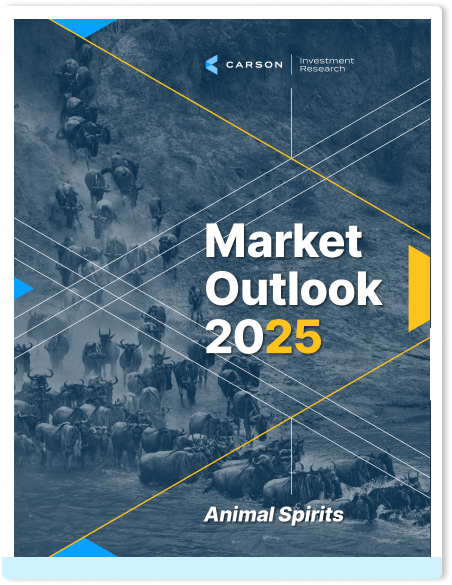Authored by Michael Barczak, CFA, VP Retirement Plans – Investments
President Trump just signed an executive order that could set the stage for a major shift in workplace retirement plans. The order directs the Department of Labor (DOL) and the Securities and Exchange Commission (SEC) to take a fresh look at how alternative assets — private equity, private credit, crypto, real estate, commodities, and other nontraditional investments — can be offered in 401(k)s and other ERISA-covered plans.
The stated goal: reduce regulatory and litigation risks for plan sponsors so they can “apply their best judgment” when deciding whether to include these types of investments.
Why This Is a Big Deal
While there’s nothing in current law that outright prohibits private market exposure in 401(k)s, most sponsors have avoided it because of fiduciary risk, high fees, liquidity constraints, and transparency issues.
That said, the market opportunity is huge. Defined-contribution plans now hold more than $12 trillion in assets, and the alternative asset industry has been pushing hard to get a piece of it. Firms like BlackRock, Apollo, and Empower are already developing products — think target-date funds or collective investment trusts — that include allocations to private assets.
The Pros and Cons
Advocates for broader asset class inclusion in retirement plans have been vocal about “democratizing” private markets, arguing:
- Private companies now outnumber public companies.
- Firms are staying private longer, meaning much of the growth happens before an IPO.
If structured well, participants could access new return sources and diversify beyond the public markets.
On the other side of the coin, there are plenty of reasons plan committees have stayed away from private equity, private credit, and crypto:
- Cost: Private market fees can be far higher than index funds or even actively managed public market investments because they invest in complex strategies requiring top-tier investment teams. While evergreen structures in this space have fees lower than the traditional “2% management and 20% incentive” fee structure, they will incorporate some combination of incentive fee, hurdle rate, and catch up/look back features, which 2 and 20 fee structure funds also utilize.
- Liquidity: The underlying assets in private market funds do not have daily liquidity, so participants have specific timing restrictions as to the timing of getting their money back. For evergreen structures, there are monthly and quarterly redemption limits relative to multi-year lock up periods for investments in most traditional private market funds.
- Complexity: Many strategies use leverage, derivatives, or concentrated positions — and disclosure requirements aren’t as strict as for mutual funds. Information on the underlying of these funds may also be made available less frequently than public investment strategies.
- Volatility: Crypto still lacks a proven long-term track record.
- Systemic Risk: There is less in the way of reporting, data, and stress testing for private investments. This makes them difficult to evaluate and benchmark within the context of a plan’s Investment Policy Statement (IPS).

Stay on Top of Market Trends
The Carson Investment Research newsletter offers up-to-date market news, analysis and insights. Subscribe today!
"*" indicates required fields
What Happens Next
The executive order itself doesn’t change the rules — it’s more of a policy signal. The DOL and SEC still have to draft new guidance, which could take until 2026. Even then, plan sponsors will have to meet the same core fiduciary standards they always have: prudence, cost reasonableness, and suitability for participants.
We saw a similar conversation take place after the updated DOL guidance surrounding Crypto investments earlier in the year. This new development is no different. Any future addition of an investment to a plan’s lineup must be properly vetted for fees, performance, risk, and personnel in line with the plan’s IPS, before it could be added.
The Secretary of Labor has been given 180 days to “clarify” the DOL’s position on alternative assets and the appropriate fiduciary process for offer them within a plan lineup. Things may evolve as the DOL and SEC proceed with rulemaking and any eventual changes will come with specific compliance requirements. Staying ahead of those developments will be critical to guiding clients effectively and avoiding surprises.
Realistically, we’re unlikely to see a flood of alternatives in 401(k)s right away. Early adoption will probably come through blended solutions — like target-date funds or multi-asset strategies — where private assets make up a modest slice of the portfolio.
What This Means for You
As this policy direction gains traction, we can expect plan sponsor clients to start asking whether these new types of investments make sense for their plans. Helping them explain both the potential benefits — like diversification and access to new return sources — and the trade-offs, including higher fees, reduced liquidity, and increased complexity will be key. This is just the opening move in what is likely going to be a complex debate within the industry for years to come. Our team will continue to monitor developments as they occur, cut through the hype, weigh the risks against the rewards, and give guidance grounded in fiduciary best practices.
8274237.1.-8.12.25A


